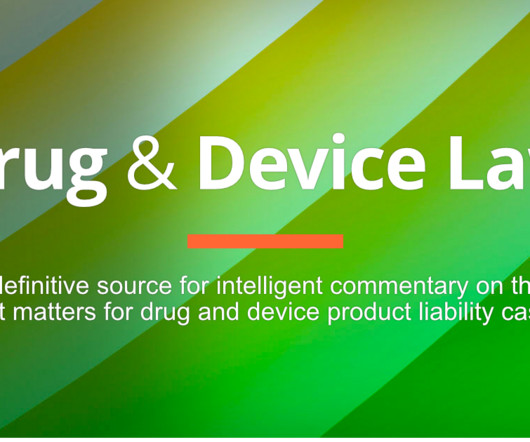Confident Learned Intermediaries Defeat Warning Causation
Drug & Device Law
JUNE 6, 2022
2009), reversed a plaintiff’s verdict for entry of judgment n.o.v. The prescriber] provided explicit, uncontroverted testimony that, even when provided with the most current research and FDA mandated warnings, as well as the information found in [defendant’s] updated. . . July 8, 2009) (applying California law); Nix v.










Let's personalize your content